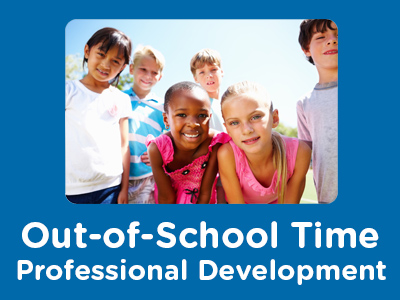 |
Course 32: Current Trends and Issues in Out-of-School Time Programs |
2.00 |
It is important for OST professionals to understand how the field has developed since its inception and to be knowledgeable about the current status of the OST field. With this knowledge and understanding, it is possible for OST professionals to participate in shaping the field as it grows in the future.
The field of OST is growing and changing as national researchers learn more about what works best in OST programs for a wide range of children and youth, their families, and their communities. Other positive changes are occurring as advocates for OST succeed in creating more public awareness about the need to make quality OST services available to all children and youth across the country. In addition, the OST field is undergoing a metamorphosis as experienced professionals in several different disciplines and fields share and contribute their knowledge, skills, and insights with the goal of creating national models that represent the best possible OST programs.
In this climate of change, OST programs face a number of important issues, revolving around the availability, affordability, and accountability of programs. Many national trends and issues have implications for OST at the state and local level. When OST professionals are well informed about national developments in the field, they can become more effective OST advocates as they design and implement high quality, sustainable programs that are responsive to youth, family, and community needs. |
 |
Current Trends and Issues in Out-of-School Time Programs: Funding & Support |
0.67 |
It is important for school-age care professionals to understand how the field has developed since its inception, and to be knowledgeable about the current status of the field of school-age care. With this knowledge and understanding, it is possible for school-age care professionals to participate in shaping the field as it grows in the future. In this course, we will explore funding and support issues in out-of-school time programs. |
 |
Current Trends and Issues in Out-of-School Time Programs: Growth & Change |
0.67 |
It is important for school-age care professionals to understand how the field has developed since its inception, and to be knowledgeable about the current status of the field of school-age care. With this knowledge and understanding, it is possible for school-age care professionals to participate in shaping the field as it grows in the future. In this course, we will explore growth and change in out-of-school time programs. |
 |
Current Trends and Issues in Out-of-School Time Programs: Needs & Benefits |
0.67 |
It is important for school-age care professionals to understand how the field has developed since its inception, and to be knowledgeable about the current status of the field of school-age care. With this knowledge and understanding, it is possible for school-age care professionals to participate in shaping the field as it grows in the future. In this course, we will explore needs and benefits in out-of-school time programs. |
 |
Going Deeper: Supporting Social-Emotional Learning and Character Development |
2.00 |
It is important for staff to reflect on the practices they are implementing throughout the program to create environments in which young people can experience social-emotional learning and practice character skills. Just as important, staff must reflect on their own personal social-emotional and character competencies and how they demonstrate those in the program, acting as a role model for program participants. During this course participants will complete a self-reflection tool to identify actions they can take to strengthen their abilities to support social-emotional and character skill development. |
 |
AZA Government Affairs: What Happens in DC Doesn't Stay in DC |
1.00 |
It is important for zoo and aquarium professionals to be knowledgeable about the legislative and regulatory activities around them because government actions could impact their work environments and their day-to-day activities. Zoo and aquarium personnel involved in the import, export, breeding, shipment, receipt, sale, transportation, or display of wildlife should be familiar with existing national and international wildlife laws. This webinar will examine some of the key U.S. laws, regulations and governmental processes which affect zoos and aquariums and how these measures directly impact directors, curators and keepers alike. |
 |
Green Practices |
1.00 |
It is said that actions speak louder than words, and that certainly rings true where wildlife and conservation issues are concerned. As a world leader dedicated to the conservation of endangered species and their habitats, San Diego Zoo Global is committed to green practices at the workplace, as well as providing green ideas for friends, members, and supporters to consider. |
 |
E-Mail Etiquette: Composing Online Correspondence |
1.50 |
It’s important for e-mail messages to be written well because they can determine your company’s success or failure. A poorly written e-mail message could give co-workers and management a bad impression of your own work habits. An effectively written e-mail message, however, is easy to understand, encourages action, and gives others a good impression of your overall job performance. |
 |
Zoological Record Keeping |
2.00 |
Keeping accurate animal-care records is an important part of zookeeping and a requirement for AZA accreditation and permitting. Standardized information systems that can be transferred and maintained collaboratively between organizations can help you identify health issues, develop sustainable species populations, and address conservation challenges. Using a case study from a zoonotic disease concern at the San Diego Zoo, you will learn the basics of record keeping, including standard abbreviations, animal identification systems, best practices in reporting, and a list of record types every accredited facility should maintain. |
 |
Creating and Maintaining Healthy and Safe School Environments |
1.00 |
Keeping school-age children healthy and safe is a major priority for schools. This requires careful attention to setting up the environment to promote healthy habits and using effective strategies for monitoring and maintaining a hygienic environment. It also requires setting up the classroom environment to promote safety and using effective strategies for monitoring and maintaining a safe environment. Because students are growing towards independence, it is also essential to help them develop habits and behaviors for living a healthy lifestyle and to help keep them safe from harm as they participate in school experiences. |











